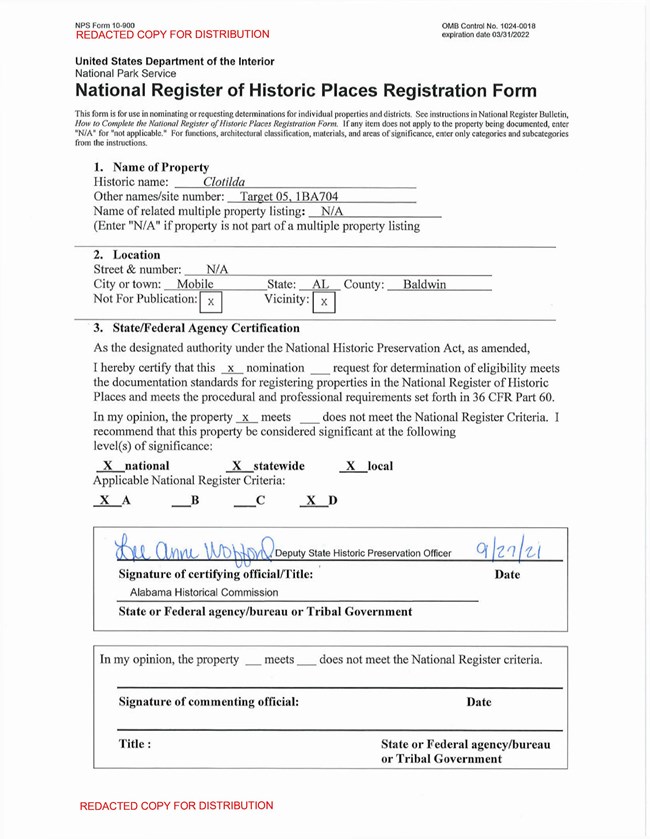
Alabama, Reference number: 100007119 – restricted,
Areas of Significance: Maritime History, Archeology/Historic, and Ethnic Heritage: Black.
Period of Significance: 1855-1860.
Clotilda is listed under Criteria A and D, at the national level of significance, and is known to have transported 110 African captives purchased on the west coast of what is now Benin to Alabama in violation of federal legislation outlawing the importation of slaves. On July 9, 1860, Clotilda’s captain and builder scuttled and burned the schooner to avoid seizure and examination by federal officials. The vessel is nationally significant for its association with the last known slave trading voyage that brought captives to the United States and the only archeologically recovered example of an American slave trading vessel lost in the transatlantic slave trade whose remains have been located and positively identified. Clotilda assumes additional significance when understood in tandem with the post-Civil War founding of Africatown (itself a nationally significant historic district listed in the National Register) by some of the very individuals who had been forcibly held captive aboard Clotilda. (See Section 8, pp. 40-41 for sample research questions.)
Link to file
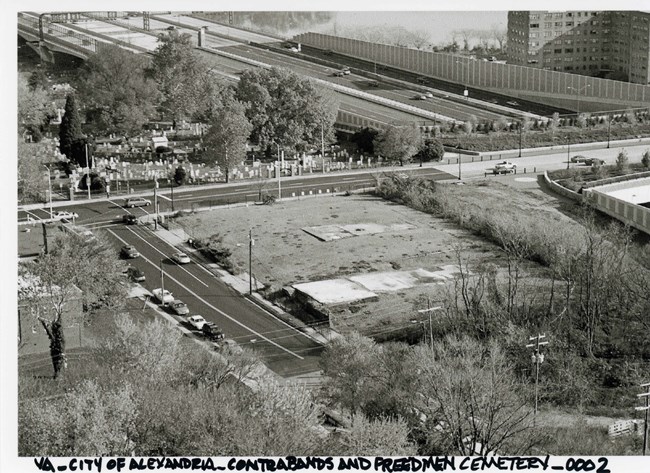
Photograph courtesy of Virginia State Historic Preservation Office
Virginia, Reference number: 12000516
Areas of Significance: Archeology/Prehistoric, Archeology/Historic - Non-aboriginal, Ethnic Heritage: African American, and Social History
Periods of Significance: 11,000 B.C.-A.D. 900 and 1864-1869.
The Contrabands and Freedmen Cemetery is an excellent example of the application of Criterion D to a historic cemetery. This nomination recounts the rediscovery and commemoration of the property. It was established by the U.S. Army Quartermaster General in 1864, later administered by the Freedmen’s Bureau, and served as a burial ground for African Americans from 1864-1869. The property contains two different sites. One is the historic cemetery, listed under Criteria A and D at the national level of significance. The other contains evidence of occasional use of the area during the Clovis, Archaic, and Late Middle Woodland periods, and is listed under Criterion D at the local level of significance.
Link to file
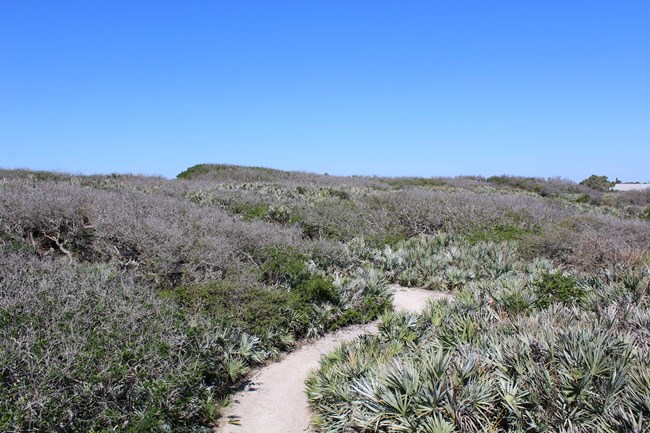
Photograph courtesy of Florida State Historic Preservation Office
Florida, Reference number: 100005243
Areas of Significance: Archeology
Period of Significance: 500 B.C. - AD 1565
Green Mound is a 3.21-acre pre-contact archeological site that retains excellent subsurface integrity as well as integrity of location, setting, materials, and feeling. This site, located in a state park and preserve and whose location is widely known, is listed under Criterion D at the local level of significance. Green Mound has assisted in further defining and developing the chronology of the St. John’s cultural tradition for northeast Florida and retains significant data potential for expanding the understanding of culture change between the St. Johns I (500 B.C.-A.D. 800) and St. Johns II (A.D. 800-1565) periods, which saw a shift from year-round occupation to only seasonal occupation of the site, respectively. The nomination presents important research questions (Section 8, pp. 1-2) and notes the site’s important comparative value as an analytical foil for other sites specified in the documentation.
Link to file
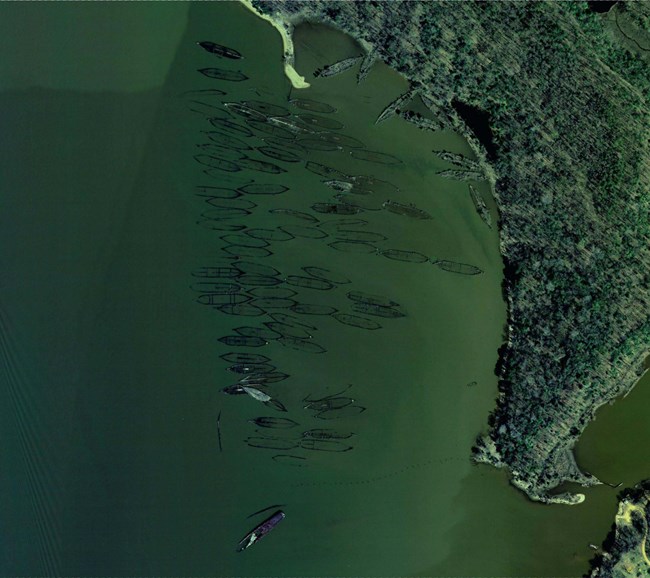
Photograph courtesy of Maryland State Historic Preservation Office
Maryland, Reference number: 15000173
Areas of Significance: Maritime History, Military, Engineering, Architecture, Transportation, and Archeology/Historic
Period of Significance: 1917-1945
This 11,347-acre district contains three broad types of historic properties: 124 documented historic vessels and 8 individual vessel debris piles; navigational aids and wharfage, cribbing, and small craft reception facilities; and non-vessel sites related to ship reduction and wrecking. The district is listed under Criteria A, C, and D.
Link to file
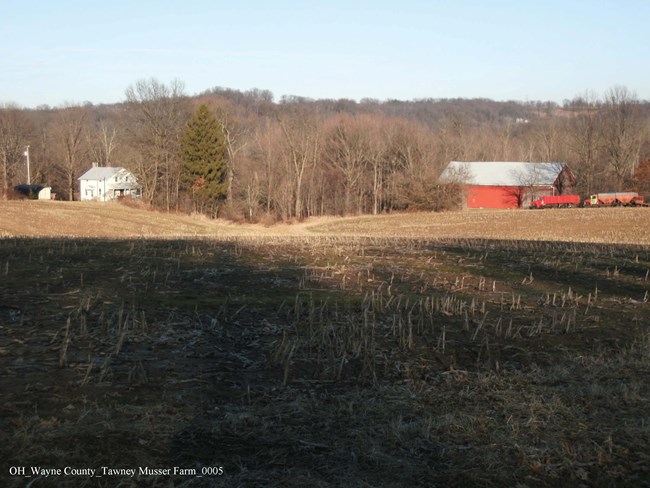
Photograph courtesy of Ohio State Historic Preservation Office
Ohio, Reference number: 100006182
Areas of Significance: Agriculture, Architecture, and Archeology/Historic
Period of Significance: 1835-1970
This farm saw six generations of continuous use. Additions and replacements to the contributing resources are detailed in the nomination, as are several structures that have been lost to time. While no archeological investigations have occurred on the farm, the nomination successfully describes the likelihood of encountering intact archeological resources. This property was nominated under Criteria A, C, and D.
Link to file
Last updated: January 9, 2025
